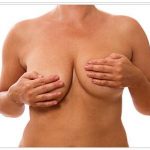Schizoaffective disorders are mental illnesses that manifest themselves either in one phase or in alternating phases in the form of manic, depressive and schizophrenic symptoms. Melancholic depressive symptoms are just as much part of the clinical picture as manic elation and schizophrenic catatonic, paranoid or hallucinatory phenomena.
What is Schizoaffective Disorder?
The term schizoaffective disorder is a collective term for mental illnesses that simultaneously or alternately contain the symptoms of depression, schizophrenia and mania. This places schizoaffective disorders somewhere between schizophrenia and affective psychoses, with their symptoms primarily resulting from the overlapping area of these two areas. See bittranslators for About Leukemia.
According to ICD-10, to diagnose schizoaffective disorder, the patient must have affective and schizophrenic symptoms in the same phase. This means that mental illnesses of this type are not actually individual illnesses, but rather combinations of three different mental illnesses that can vary in concentration.
The weighting of the symptoms can vary. Schizoaffective disorders were first described in the middle of the 19th century, when mixed psychoses or incidents were mentioned. It was not until the first third of the 20th century that the concept of schizoaffective illness became established.
Causes
So far, medicine has assumed a causal genetic factor for schizoaffective disorders, which has not yet been determined in more detail. Neurochemically and neuroendocrinologically, the clinical picture has not yet been researched further.
Mental and psychosocial factors such as stress, private or professional stressful situations, environmental reactions, and difficulties in partnership, family, and friendships are likely to develop into an additional factor influencing the onset and progression of the disease. A specific personality structure with increased susceptibility to this form of mental illness could not be determined so far.
Symptoms, Ailments & Signs
A major symptomatic area of schizoaffective disorder is melancholic-depressive symptoms such as sleep disorders, feelings of guilt or suicidal thoughts. On the other hand, manic symptoms such as severe excitement, excessive irritability, or an enormous increase in self-motivation can also make up the main symptomatic area.
To these symptoms are added those of schizophrenic disorder, which manifest themselves in catatonic, paranoid, or hallucinatory characteristics. In addition to an affective disorder according to ICD-10, the patient also suffers either from an ego disorder such as making thoughts out loud, from a delusion of control such as delusions of influence, from commenting or dialoging voices, from a persistent and completely unrealistic delusion, from confused speech or from catatonic symptoms such as negativism.
The most common symptoms in the early phase include a tired, listless and easily exhausted or moody and slightly aggressive basic mood. Mood swings between cheerful, resigned and depressed are also common. In addition, anxious-phobic signs of illness can occur. In addition, there are often memory and concentration disorders or increasing forgetfulness, a drop in performance and restless and nervous tension.
Pain often occurs without an identifiable cause. Changes in behavior are conceivable and are usually expressed in distrust and social withdrawal. In addition to increased sensitivity to noise and light, abnormal and hardly understandable discomfort can also occur.
Diagnosis & course of disease
The diagnosis of a schizoaffective disorder is based on ICD-10. Schizoaffective psychoses are either phasic-recurrent or monophasic. In the single-phase course, a distinction is made between schizodepressive, schizomanic and bipolar disorders. However, the phasic-revising course occurs more frequently than the monophasic form.
In this case, the individual phases can each correspond to a schizophrenic episode, a purely depressive episode, a purely manic episode, or a mixed manic-depressive episode. On the other hand, the individual phases can also consistently be manic-depressive, schizodepressive, schizomanic, or a mixture of bipolar. In individual cases, the symptoms of a schizophrenic and mixed manic-depressive illness are consistently present, i.e. the illness manifests itself in schizomanic-depressive episodes.
Complications
Even though the episodes build up one after the other, this can sometimes happen with no intervening intervals of full health. Almost all schizoaffective disorders show several course types at the latest in the late course, which means that the symptoms often change. Only a third of the patients remain stable overall. A more favorable prognosis is associated with more schizomanic episodes than with more schizodepressive forms. The schizodepressive form in particular tends to become chronic later on.
Due to these disorders, those affected suffer from a significantly reduced quality of life and severe restrictions in their everyday life. As a rule, the disease leads to a number of different psychological complaints. Those affected suffer from severe sleep disorders and thus also from depression or mental disorders. The feeling of permanent excitement can also occur and make everyday life more difficult.
Most patients appear irritable or even slightly aggressive. Furthermore, paranoid feelings or hallucinations can occur, which can have a very negative effect on social contacts. Those affected often suffer from a delusion of control and severe mood swings. Especially in children, the disease can significantly restrict and delay the development of the child.
The children also suffer from concentration disorders and often appear restless or nervous. A strong sensitivity to noise or light can also occur as a result of the disease and continue to make everyday life difficult for the patient. This condition is usually treated with medication.
However, antidepressants can be responsible for various side effects. It is also not possible to predict whether the treatment will lead to a positive course of the disease. Life expectancy itself is usually not reduced or limited by the disease.
When should you go to the doctor?
A doctor is needed in the event of abnormal behavior or emotional distress. Sleep disorders, hallucinations or delusions should be examined and treated. If there are mood swings, memory problems or a strong nervous appearance, a doctor should be consulted.
If there is a marked change in drive or behavior that is self-endangering or puts other people in a dangerous situation, you should consult a doctor. A lack of awareness of illness is characteristic of schizoaffective disorders. Therefore, the relatives or people from the social environment bear a special responsibility.
If there is a stable and healthy relationship of trust, you should aim to see a doctor together with the person concerned so that a diagnosis and medical care can be made. In particularly serious cases, a medical officer must be called. If social rules are disregarded, there is activity or if the person concerned falls into apathy, he needs help.
Sensory hypersensitivity, hearing voices, or communicating with imaginary entities are symptoms of the disorder. A doctor’s visit is necessary because actions are often taken based on the delusions that are hurtful. If everyday life can no longer be managed without help or if there are strong fears, a doctor is also needed.
Treatment & Therapy
In the acute stage, the therapy and treatment of schizoaffectively disturbed patients is based on the prevailing symptoms. In the case of predominantly schizophrenic symptoms, treatment with neuroleptics is indicated, while lithium can also be used against predominantly manic symptoms. Drug-based antidepressants can be given against predominantly depressive syndromes, with psychotherapeutic therapy often indicated being awake.
In addition to acute treatment, patients with a form of schizoaffective disease also receive phase prophylaxis, which can focus on carbamazepine or lithium, for example. Depending on the individual case, however, a two-pronged phase prophylaxis may also be necessary, which combines the drugs mentioned with neuroleptics. The accompanying psychotherapy focuses on current conflicts and stressful situations. The focus here is on coping with the disease and dealing with the consequences of the disease.
Prevention
In view of the probably mainly genetic risk factors of schizoaffective disorders, the disease can hardly be prevented. Anyone who recognizes the symptoms of the early course mentioned above can at least benefit from an early diagnosis by contacting a specialist.
In the case of schizoaffective disorder, the person affected suffers from schizophrenia and, in addition, from manic or depressive moods. In severe cases, he is affected alternately by all three disorders.
Aftercare
As with all mental illnesses, follow-up care is a necessary part of therapy. Avoiding relapse is the ultimate goal. If the person concerned takes psychotropic drugs to counteract the symptoms, the psychotherapist monitors the healing process. If the disorder can be treated satisfactorily in this way, close follow-up care is no longer necessary.
Occasional follow-up appointments should still be scheduled. The form of aftercare depends on the severity of the symptoms and the question of which mood swings bother the patient in addition to the schizophrenia. Parallel depressive features require different follow-up care than manic disorders.
A schizoaffective disorder can lead to disability in the case of a severe clinical picture. This brings with it the risk of additional depression. During the follow-up care, the sick person is strengthened, a possible feeling of worthlessness should be taken away from him. A schizophrenic with shopping addiction as a manifestation of mania runs the risk of going into debt.
Here, too, interventions can be made during follow-up appointments. Sometimes a debt counselor has to be consulted for this. Close relatives often experience the illness as a burden. In such situations, follow-up care also extends to the patient’s parents or relatives in order to better manage the disease and its effects.
You can do that yourself
In the case of a schizoaffective disorder, the options for self-help are extremely limited. Due to the disorder and the associated impairments, the person affected can do little to improve their own situation. He is dependent on the help and support of other people in the long term. Only relatives and members of the social environment can have a positive influence on further developments through their behavior, their understanding and their decisions. Cooperation with a doctor is absolutely necessary for this disease.
In addition, it is extremely beneficial for the well-being of those affected if a stable social environment is available and maintained in the long term. Although this disease usually leads to an inpatient stay, regular contact with relatives is supportive and helpful in overcoming the disease. According to studies, the feeling of security and a regular daily routine have a positive influence on the patient. The intensity of the complaints is demonstrably lower when there is continuous contact with close friends and family members. Joint activities that are tailored to the needs of the patient help to improve the overall situation.
In addition, influencing factors such as a healthy diet and the avoidance of harmful substances such as alcohol or nicotine are advisable.


